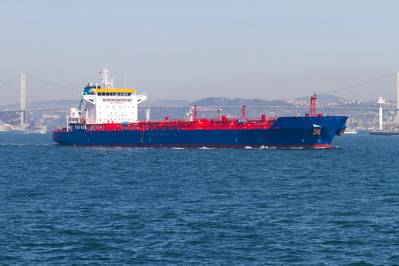From January 2014 - October 2016 the crude oil tanker segment composing of VLCC, suexmax and aframax ships, had a net-fleet growth of 7.3 percent, which is equal to 24.3 million (m) DWT. The VLCC segment, with 20.7m DWT or a net fleet growth rate of 11 percent took the lion’s share, followed by the suezmax segment with 4.4m DWT or 5.5 percent. Whereas the aframax segment decreased by -0.8m DWT or 1 percent, in relation to the fleet size of the specific ship segment.
The Baltic and International Maritime Council’s (BIMCO) Chief Shipping Analyst Peter Sand said, “The recent crude oil tanker fleet growth becomes increasingly troubling, and worsen the balance between supply and demand strongly, if demolition does not pick up.
“In the past two years, specifically, less than 2.3m DWT of crude oil tanker capacity has been demolished, which in comparison to the 358m DWT of the current crude oil tanker fleet is a vanishingly small proportion.
“But there may be changes just around the corner. The demolition of the 1994-built VLCC Progress with 297,237 DWT by mid-October indicates a resumption of demolition activity for the crude oil tanker segment. In October 2016, this ship was the first trading VLCC since the 1995-built Hebei Mountain in October 2014 with 307,050 DWT was scrapped.”
Per GMS reports in-between these two years only two other VLCC’s were demolished. However, either these have already stopped trading or have been converted for other use. Most recently in November 2016, another VLCC with 281,434 DWT was demolished, thus indicating a new trend in demolition activity.
Newbuilt deliveries in the crude oil tanker segment doubled from 0.9m DWT in January 2014 to 1.8m DWT in October 2016. Accumulating in the reference period to a total of 35m DWT. In this period, 25.7m DWT or 73.4 percent were VLCCs, 6.1m DWT or 17.3 percent were suezmaxes and 3.2m DWT or 9.3 percent of gross delivered capacity was aframaxes.
At the same time, ship demolition ceased to exist between January 2014 – October 2016 as the freight markets improved significantly, bringing profitability back to the industry. Just 7.3m DWT of crude oil tanker capacity was demolished. The VLCC and aframax segment accounted for 85 percent or 6.2m DWT of the total crude oil tanker demolition, while the suezmax segment saw demolition of 1.1m DWT or 15 percent of total crude oil tanker scrapping.
Future demolition candidates
Between January 2014 - October 2016 crude oil tanker demolition only affected ships older than 15 years. The current crude oil tanker fleet holds 59.3m DWT or 18 percent of ships aged more than 15 years, which are the most likely candidates to be sold for demolition. The VLCC fleet contains 32.5m DWT or 15 percent of the current VLCC fleet older than 15 years, while the suezmax fleet has 12.9m DWT or 21 percent and the aframax fleet 13.9m DWT or 22 percent of these older ships.
Demolition influencing factors
The key factor influencing the low demolition levels was solid earnings throughout the year in 2015. The decrease of the BIMCO dirty tanker earnings by -51 percent from January 2016 – October 2016 however, might have a reverse effect on future demolition activity.
Moreover, low bunker prices, which decreased from January 2014 – October 2016 by -53 percent or $301 per metric ton, eased the pressure on fuel efficiency for the older ships.
Furthermore, the ship demolition price decreased from Q1 2014 – Q3 2016 on a compounded quarterly rate for VLCCs by -4.0 percent, suezmaxes by -3.7 percent and aframaxes by -4.1 percent. For a VLCC, the price dropped from $19.4m to $12.3m for an average ship of 42,000 ldt.
In correlation, current fleet age profiles, earnings, bunker prices and ship demolition value – are influencing demolition activity in the crude oil tanker segment.
Steady increasing orderbook
The orderbook-to-fleet ratio of 16 percent in Q3 2016 provides evidence for future fleet growth.
However, if the fleet in future expands by more than the growing need, it will contribute to an imbalance between supply and demand, therefore resulting in decreased earnings. This should trigger higher demolition activity in the crude oil tanker segment.
Peter Sand adds, “Decreased earnings of crude oil tankers since the start of 2016 is a clear sign of the mismatch between demand and supply. Something which is not fundamentally changed by the seasonal upswing in Q4-2016 as seen for VLCCs.
“In addition to freight market uncertainties, the enforcement of the ratified ballast water treatment legislation and the IMO global sulphur cap at 0.5 percent in 2020, will be a stimulus for demolition of inefficient ships and therefore could serve as a catalyst for an improving freight market.”
Showing leadership to the global shipping industry, in 2017 BIMCO will continue its unique series of analysis on the “Road to Recovery” for the crude oil tanker market, following the analysis published in 2016 on what is needed for the dry bulk sector to recover.














